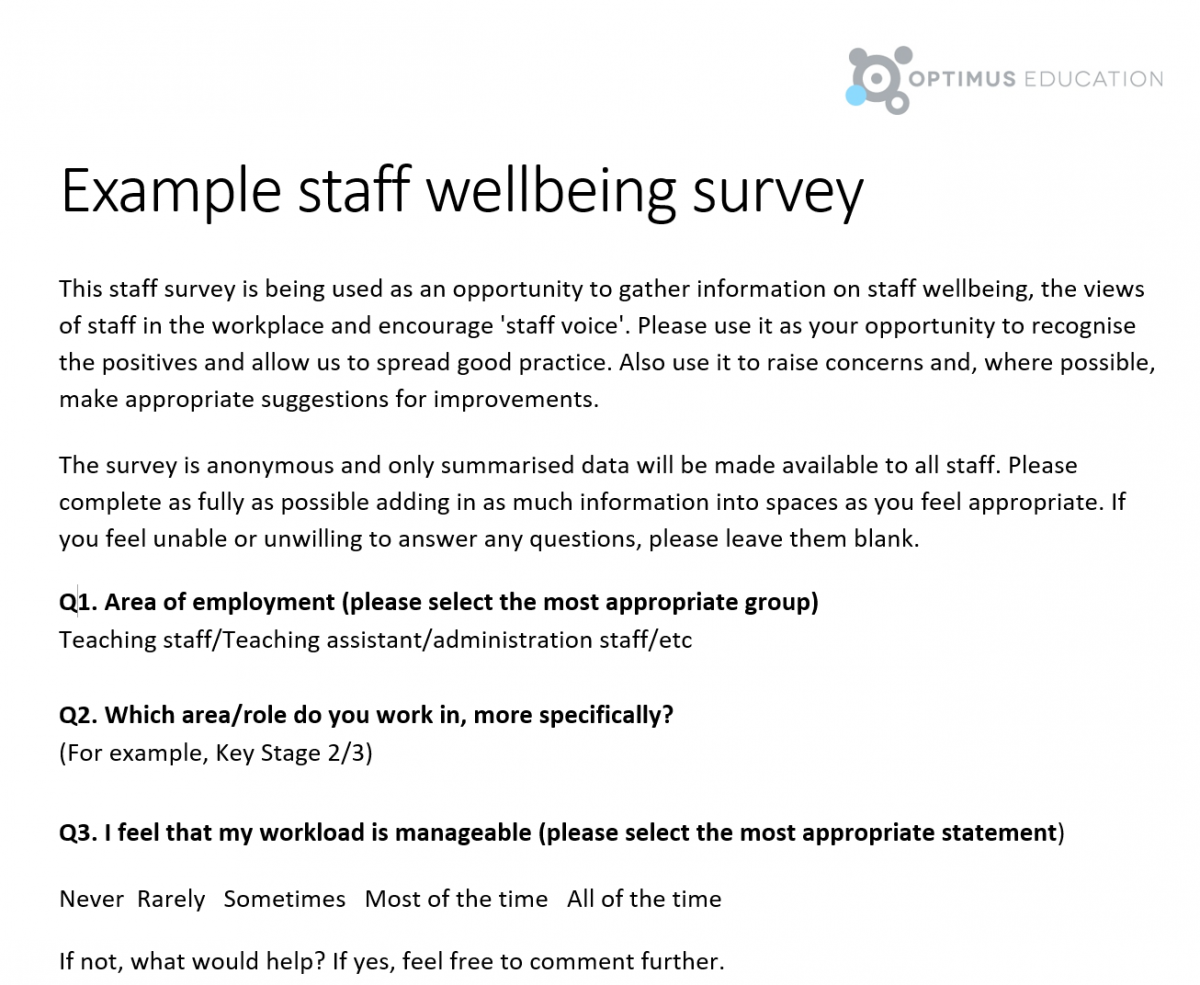- Latest NewsUp-to-date articles giving you information on best practice and policy changes.
- Model PoliciesA comprehensive set of templates for each statutory school policy and document.
- Skills AuditsEvaluate your skills and knowledge, identify gaps and determine training needs.
Supporting staff mental health and wellbeing: guidance and resources
These links and resources are a starting point to help you recognise potential issues in yourself and others, and to put steps in place to make staff health and wellbeing a priority in your school
School staff devote so much time and effort to supporting the wellbeing of pupils that, sometimes, it is at the expense of their own mental health.
It’s an ongoing issue for teaching and non-teaching staff, who have have been under additional pressure as a result of the Covid-19 pandemic.
Starting points for wellbeing
As our regular contributor Adele Bates says: 'We are humans, and we have emotions. We feel things. We have highs and lows.'
Often, a first step is to admit to yourself that your mental health is suffering. In this webinar, David Beeney highlights how being open and honest about how his own mental health issues had a positive effect on not only on himself but also those around him.
Many of the resources on our Pupil mental health and wellbeing guidance page also apply to adults.
For example, the indicators of stress and depression apply to all ages.
Remember to check in with yourself and your colleagues for these warning signs and consider ways of managing those feelings.
Resilience
Pupil resilience begins with resilient teachers. But it's OK to sometimes find it hard to bounce back from the challenges we face, especially when circumstances are always changing.
Check in with yourself to recognise the signs that you need to take a step back and soothe yourself. Sometimes, self-regulation is as easy as stretching or having something to eat. At other times, you may need to take more significant action.
Either way, being honest with yourself and modelling self-regulation with your pupils have a surprisingly successful outcome for both you and them.
Over on our blog, Nicola Harvey explains the PERMA approach to wellbeing, which research suggests can improve physical health, vitality, job satisfaction, life satisfaction and commitment within organisations.
Workload
A common reason for stress and anxiety among school staff is workload. It's not always easy to do less when there's always more to be done but it is important to set boundaries for your own self-care.
The DfE’s website has a variety of resources to help reduce staff workload, including a school workload reduction toolkit. Head teacher Josephine Smith suggests how this can be customised for your own needs and used to ensure the best outcomes for everyone.
Strategies to simplify tasks and save a little time here and there can add up to a noticable improvement in the management of workload, expectations and morale.
Another way to relieve the pressure on teachers in particular is by making effective use of teaching assistants. This has the added benefits of offering TAs new routes to develop their careers, and of finding new ways to support pupils.
Find out more on the Teaching assistants: Successful classroom partnerships online course.
Staff wellbeing surveys
Take a wider view of the situation across your school by getting involved in the staff wellbeing survey to find out what the main issues are.
Our staff survey template is a good place to start and you can customise it for your own setting.
Even if you are not responsible for the staff survey, make sure you complete it honestly, to present a realistic picture of staff wellbeing across the setting.
The survey leaders should share the results with colleagues and act upon findings as soon as is practical. It’s also important to monitor the impact of new initiatives to ensure they are making a real difference.
Practical approaches to improving wellbeing
A culture that actively promotes staff wellbeing depends on everybody working together to create a positive environment. Actions can range from small steps, such as saying good morning to everyone you meet, to cultivating positive communication at all levels.
Here are some other practical ideas:
- Embed staff and pupil wellbeing into your school’s culture and curriculum by working towards the Wellbeing Award for Schools.
- Download and discuss this list of practical ideas to support staff wellbeing and reduce workload.
- If you're a state-funded school or college, encourage your senior leadership team to sign up to the DfE's staff wellbeing charter. This will show current and prospective staff that your school or college is dedicated to improving and protecting their wellbeing.
- Display our 12 ways to boost your wellbeing poster in your staffroom to remind colleagues of the importance of maintaining a healthy work/life balance.
- Consider regular supervision sessions for everyone. These enable staff to reflect on and challenge their current knowledge, attitudes and values.
- Head over to our in-house training area for more self-study courses, including:
Last Updated:
18 Nov 2021




